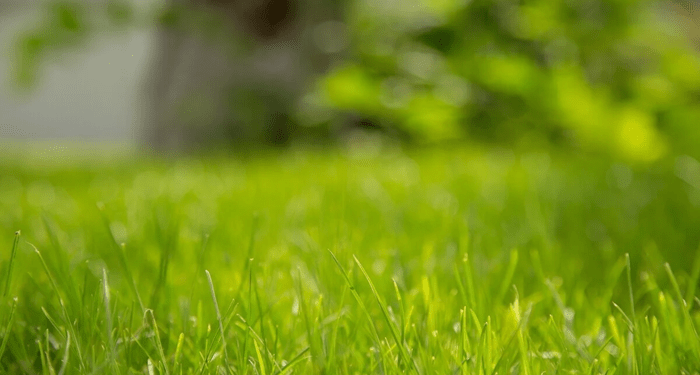Having a beautiful and healthy lawn is the dream of every homeowner. However, achieving that dream requires proper care and maintenance, and one crucial aspect of lawn care is knowing the type of grass you have. Different grass types have different needs and requirements, so identifying your lawn’s grass type is essential for providing the right care. In this article, we will explore the importance of grass identification and the benefits it brings to your lawn.
Knowing your lawn’s grass type allows you to tailor your lawn care practices to its specific needs. Each grass type has different growth patterns, water requirements, and tolerance to heat and cold. By identifying your grass type, you can provide the appropriate amount of water, fertilizer, and mowing height to ensure optimal growth and health. Additionally, knowing your grass type helps you compare TifTuf vs Sir Grange and other turf varieties, identify and address any issues or diseases that may be specific to that particular type.
Key Takeaways
- Grass identification is important for maintaining a healthy lawn.
- Warm-season grasses thrive in hot weather, while cool-season grasses prefer cooler temperatures.
- Bermuda grass has a distinctive V-shaped leaf and spreads quickly.
- Zoysia grass has a fine texture and is drought-resistant.
- Kentucky bluegrass has a blue-green color and is commonly used in northern regions.
Warm-Season Grasses vs. Cool-Season Grasses
Grasses can be broadly categorized into two main types: warm-season grasses and cool-season grasses. The main difference between these two types lies in their growth patterns and ideal growing conditions.
Warm-season grasses thrive in hot climates and go dormant during the winter months. They have a higher tolerance for heat and drought and are typically more resistant to pests and diseases. Some common warm-season grasses include Bermuda grass, Zoysia grass, and St. Augustine grass.
On the other hand, cool-season grasses are best suited for regions with cooler temperatures and mild summers. They grow actively during the spring and fall seasons but may struggle in hot summer months. Cool-season grasses include Kentucky Bluegrass, Fescue grass, and Ryegrass.
Identifying Bermuda Grass
Bermuda grass is a warm-season grass that is known for its excellent heat tolerance and ability to withstand heavy foot traffic. It has a fine texture and a vibrant green color. Bermuda grass spreads through both above-ground stolons and below-ground rhizomes, making it highly adaptable and quick to recover from damage.
Bermuda grass is commonly found in warm and tropical regions, such as the southern United States, Africa, and Australia. It thrives in full sun and requires at least 6-8 hours of direct sunlight per day. Bermuda grass is highly drought-tolerant but may require regular watering during prolonged dry periods.
To maintain Bermuda grass, it is important to mow it at a height of 1-2 inches. Regular mowing helps to promote lateral growth and prevent thatch buildup. Additionally, Bermuda grass benefits from regular fertilization and aeration to ensure proper nutrient uptake and root development.
Identifying Zoysia Grass
Zoysia grass is another warm-season grass that is known for its dense growth habit and ability to withstand heavy foot traffic. It has a medium to coarse texture and a dark green color. Zoysia grass spreads through both above-ground stolons and below-ground rhizomes, similar to Bermuda grass.
Zoysia grass is commonly found in warm regions, such as the southern United States, Asia, and Australia. It thrives in full sun but can tolerate some shade. Zoysia grass has good drought tolerance but may require occasional watering during dry periods.
Maintaining Zoysia grass involves mowing it at a height of 1-2 inches. Regular mowing helps to promote lateral growth and prevent thatch buildup. Zoysia grass benefits from regular fertilization and aeration to ensure proper nutrient uptake and root development.
Identifying Kentucky Bluegrass
Kentucky Bluegrass is a cool-season grass that is known for its fine texture and deep green color. It has a dense growth habit and forms a thick turf when properly maintained. Kentucky Bluegrass spreads through above-ground stolons and below-ground rhizomes.
Kentucky Bluegrass is commonly found in cooler regions, such as the northern United States and Europe. It thrives in full sun but can tolerate some shade. Kentucky Bluegrass has good drought tolerance but may require regular watering during dry periods.
Maintaining Kentucky Bluegrass involves mowing it at a height of 2-3 inches. Regular mowing helps to promote lateral growth and prevent thatch buildup. Kentucky Bluegrass benefits from regular fertilization and overseeding to maintain its density and color.
Identifying Fescue Grass
Fescue grass is another cool-season grass that is known for its fine texture and ability to tolerate shade. It has a medium to coarse texture and a deep green color. Fescue grass forms a dense turf when properly maintained and spreads through above-ground tillers.
Fescue grass is commonly found in cooler regions, such as the northern United States and Europe. It thrives in partial shade but can tolerate some sun. Fescue grass has good drought tolerance but may require regular watering during dry periods.
Maintaining Fescue grass involves mowing it at a height of 2-3 inches. Regular mowing helps to promote lateral growth and prevent thatch buildup. Fescue grass benefits from regular fertilization and overseeding to maintain its density and color.
Identifying Ryegrass
Ryegrass is a cool-season grass that is known for its fast germination and establishment. It has a medium texture and a bright green color. Ryegrass forms a dense turf when properly maintained and spreads through above-ground tillers.
Ryegrass is commonly found in cooler regions, such as Bassendean, Western Australia and Europe. It thrives in full sun but can tolerate some shade. Ryegrass has good drought tolerance but may require regular watering during dry periods.
Maintaining Ryegrass involves mowing it at a height of 2-3 inches. Regular mowing helps to promote lateral growth and prevent thatch buildup. Ryegrass benefits from regular fertilization and overseeding to maintain its density and color.
Understanding the Importance of Grass Identification
Proper grass identification is crucial for maintaining a healthy lawn. By knowing your lawn’s grass type, you can provide the right care and maintenance practices to ensure optimal growth and health. Different grass types have different needs when it comes to watering, fertilizing, mowing, and pest control. By tailoring your lawn care practices to your grass type, you can avoid over or under-watering, under or over-fertilizing, and other common mistakes that can harm your lawn.
Additionally, knowing your grass type helps you identify and address any issues or diseases that may be specific to that particular type. Certain grass types are more susceptible to certain diseases or pests, so being able to identify your grass type can help you take proactive measures to prevent or treat these issues.
Tips for Maintaining Different Grass Types
Regardless of the grass type you have, there are some general tips for maintaining a healthy lawn:
1. Watering: Water deeply and infrequently to encourage deep root growth. Avoid over-watering, as it can lead to shallow root systems and increased susceptibility to diseases.
2. Fertilizing: Follow a regular fertilization schedule based on your grass type’s specific needs. Use a slow-release fertilizer to provide a steady supply of nutrients over time.
3. Mowing: Set your mower at the appropriate height for your grass type and avoid cutting more than one-third of the grass blade at a time. Regular mowing helps promote lateral growth and prevents thatch buildup.
4. Aeration: Regularly aerate your lawn to improve soil compaction and promote proper nutrient uptake and root development.
For warm-season grasses:
– Provide at least 6-8 hours of direct sunlight per day.
– Water deeply but infrequently, as warm-season grasses have good drought tolerance.
– Mow at a height of 1-2 inches to promote lateral growth and prevent thatch buildup.
– Fertilize regularly during the active growing season.
For cool-season grasses:
– Provide partial shade or full sun, depending on the grass type’s specific requirements.
– Water deeply but infrequently, as cool-season grasses have good drought tolerance.
– Mow at a height of 2-3 inches to promote lateral growth and prevent thatch buildup.
– Fertilize regularly during the active growing season and overseed as needed to maintain density.
The Benefits of Knowing Your Lawn’s Grass Type
In conclusion, knowing your lawn’s grass type is essential for maintaining a healthy and beautiful lawn. By identifying your grass type, you can provide the right care and maintenance practices to ensure optimal growth and health. Different grass types have different needs when it comes to watering, fertilizing, mowing, and pest control. By tailoring your lawn care practices to your grass type, you can avoid common mistakes and ensure the long-term health and beauty of your lawn. So take the time to identify your lawn’s grass type and enjoy the benefits of a well-maintained lawn.












